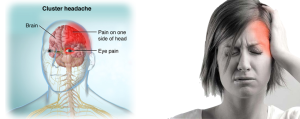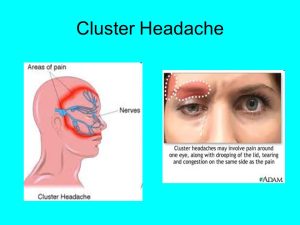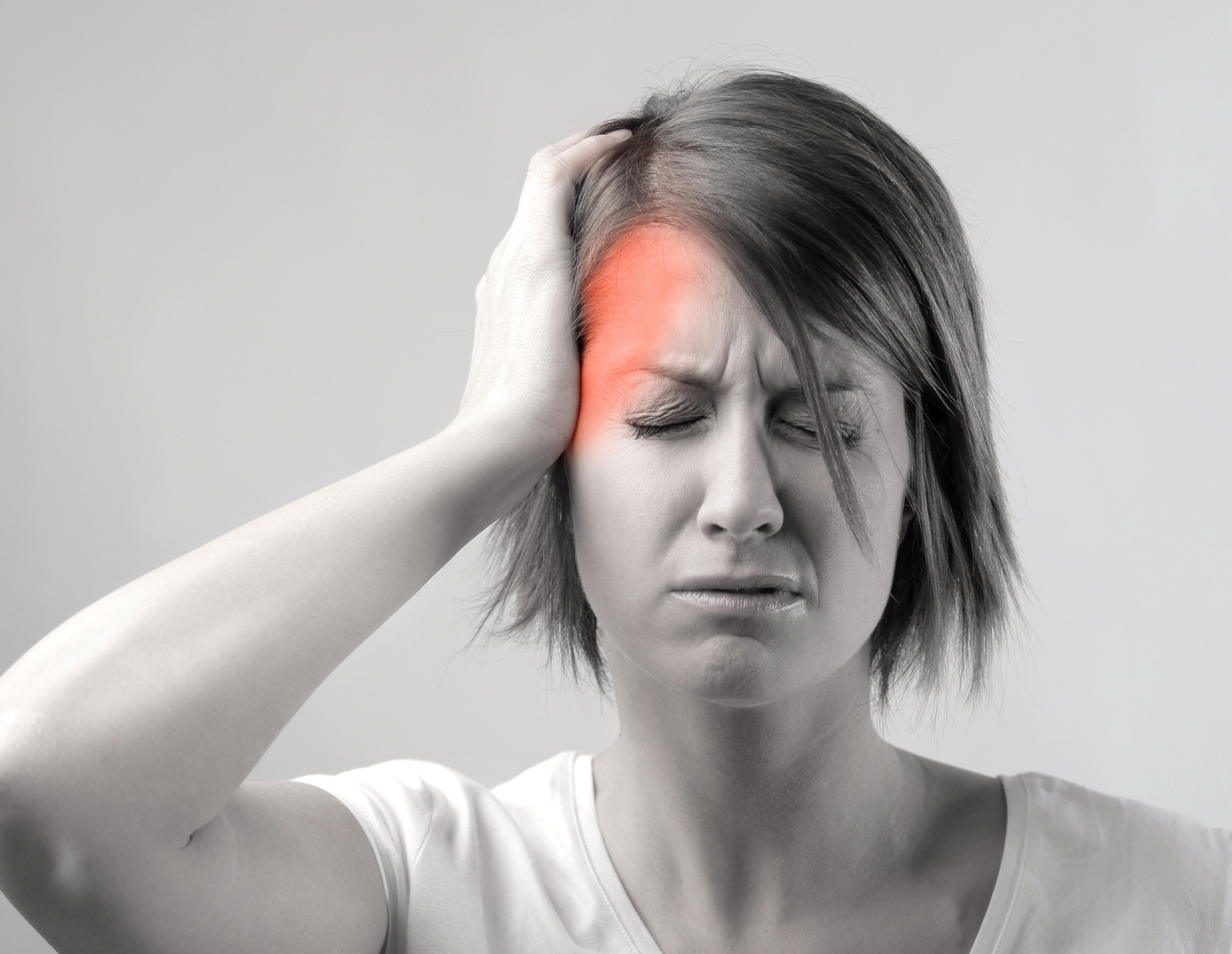Introduction
Cluster headaches, though relatively rare, present a significant challenge to those who endure them. Characterized by intense, short-lived episodes of excruciating pain, these headaches often lead to misdiagnoses as symptoms of allergies or work-related stress. Despite advancements in medical knowledge, the precise cause of cluster headaches remains elusive. What experts do know is that a nerve in the face plays a crucial role in these debilitating episodes, causing intense pain centered around one eye.
What Happens During a Cluster Headache?
The trigger for a cluster headache lies in a nerve pathway deep within the brain, particularly originating from the hypothalamus. This region, known as the home of the “internal biological clock” regulating sleep and wake cycles, sends signals through the trigeminal nerve. This nerve, responsible for facial sensations, amplifies pain around the eye during a cluster headache episode. Unlike migraines, cluster headaches are characterized by their severity, though they mercifully have a shorter duration.

Characteristics of Cluster Headaches
Understanding the distinct characteristics of cluster headaches is crucial for accurate diagnosis and management. Let’s delve into the key features that set these headaches apart:
Speed: Cluster headaches have a rapid onset, reaching their full force within 5 to 10 minutes.
Pain: The pain is almost always localized on one side of the head, often described as burning or piercing. This pain may extend to various areas such as the forehead, temple, nose, cheek, or upper gum on the same side. The sensation is commonly felt behind or around one eye, with a noticeable pulsing of blood.
Duration: Cluster headaches typically last between 30 to 90 minutes. While they can be as short as 15 minutes or extend up to 3 hours, the intensity is such that it renders the individual unable to sit still.
Predictability: These headaches exhibit a fascinating link to the circadian rhythm, often referred to as “alarm clock headaches.” They occur at the same time each day, regularly waking sufferers even an hour or two after bedtime. Nighttime attacks tend to be more severe than daytime ones.
Frequency: Most individuals experience daily headaches for 2 weeks to 3 months, followed by pain-free intervals that last at least 2 weeks.

Comparative Table: Cluster Headaches vs. Migraines
| Characteristics | Cluster Headaches | Migraines |
|---|---|---|
| Speed | Rapid onset | Slow onset |
| Pain | One-sided, burning or piercing | Throbbing, may affect both sides |
| Duration | 30 to 90 minutes | Several hours to days |
| Frequency | Daily, multiple times | Less frequent, occasional |
| Triggers | Linked to circadian rhythm | Varied, including weather changes |
| Associated Symptoms | Sensitivity to light, sound, and smells | Nausea, vomiting, auras, weakness |
Symptoms and Triggers
During a cluster headache episode, individuals may experience a range of symptoms, including:
- Discomfort or a mild burning feeling
- A swollen or drooping eye
- A smaller pupil in the eye
- Eye redness or watering
- Runny or congested nose
- Red, warm face
- Sweating
- Sensitivity to light
- Restlessness or agitation, often pacing

Common Triggers During a Cluster Period:
- Cigarette smoke
- Alcohol
- Strong smells
- Change to a high altitude
- Bright light
- Exercise or exertion
- Heat
- Foods containing nitrates, such as bacon or lunch meat
- Cocaine

Migraine vs. Cluster Headache
While both types of headaches involve intense pain, differentiating between migraines and cluster headaches is crucial for accurate diagnosis and effective treatment. Migraine headaches typically have a slower onset and can last from a few hours to a few days. Migraine pain tends to throb and may affect both sides of the head, forehead, or temples. Individuals experiencing migraines may also have nausea, vomiting, sensitivity to light, sound, and smells, as well as visual disturbances known as auras.

Treatment Options for Cluster Headaches
Managing cluster headaches involves a multifaceted approach, considering acute attack treatments, preventive medications, and alternative therapies.
Acute Attack Treatments:
- Triptans: Effective in alleviating pain, options include sumatriptan (Imitrex), zolmitriptan (Zomig), and dihydroergotamine (DHE 45).
- Octreotide: Administered through an IV, this lab-made form of somatostatin helps relieve pain.
- Lidocaine: Available as a nasal spray, it acts as a pain reliever.
- Oxygen: Inhaled oxygen through a face mask for 15 minutes can provide relief during an attack.
Preventive Medications:
Preventive medications aim to shorten the duration and reduce the severity of cluster headaches. Options include corticosteroids (prednisone), divalproex sodium (Depakote), galcanezumab (Emgality), ergotamine tartrate (Cafergot, Ergomar), gabapentin (Gralise, Neurontin), lithium carbonate, topiramate (Qudexy XR, Topamax, Trokendi XR), and verapamil (Calan, Verelan).
Invasive Options:
- Occipital Nerve Block: Injecting a mix of anesthetic and steroid into these nerves at the base of the skull.
- Nerve Stimulation: Involves occipital nerve stimulation or neuromodulation, using devices like Cefaly and GammaCore.
Surgery:
In extreme cases where other treatments prove ineffective, surgical interventions such as deep brain stimulation may be considered.

Lifestyle Changes and Alternative Treatments
Adopting certain lifestyle changes can contribute to headache prevention:
- Maintaining a regular sleep schedule.
- Avoiding alcohol, a common trigger during cluster periods.
- Exploring alternative treatments like capsaicin nasal spray or melatonin, which may help reduce the frequency of headaches.
Breathing Exercises
While not extensively studied, some doctors suggest incorporating breathing exercises to manage the intense pain associated with cluster headaches. These exercises, while not a substitute for medical interventions, can potentially aid in stress management and anxiety reduction.
Deep Breathing:
- Focus on your bellybutton, taking slow, deep breaths in through your nose.
- Feel the expansion of your lungs and the relaxation as you exhale through your nose.
- Repeat, allowing your nervous system to gradually ease.
Rhythmic Breathing:
- Inhale slowly through your nose, counting to five.
- Exhale slowly through your nose, counting to five.
- Repeat, feeling yourself relax with each breath.
Visualized Breathing:
- Close your eyes and breathe normally.
- As you inhale through your nose, visualize calming air filling your lungs.
- As you exhale, imagine pushing tension out with your breath.
- Repeat, combining breathing with mental imagery. Explore other health problem

Conclusion
Understanding the intricacies of cluster headaches empowers individuals to make informed decisions about their healthcare journey. From traditional medications to lifestyle adjustments and alternative therapies, a comprehensive approach ensures better management of these challenging and often debilitating headaches. Seeking professional medical advice and exploring various treatment options tailored to individual needs can significantly improve the quality of life for those navigating the complexities of cluster headaches.




